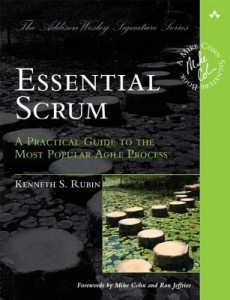This book, Essential Scrum, is an attempt to be the missing single source for essential Scrum knowledge. It includes an in-depth discussion of Scrum’s principles, values, and practices–one that in most cases agrees with other agile thought leaders and “The Scrum Guide.” (Where this book offers a different perspective from what is widely promoted elsewhere, I point it out and explain why.)
Given this, the question is, does it deliver on its promise?
Absolutely.
I’m a certified Scrum Master and I’ve been an Agile practitioner for approximately a decade. I attempt to stay current in the praxis (as much as anyone can, I suppose), and even given this, I still came away from Essential Scrum with numerous insights and a fresh understanding of the concepts.
While I’d be hard pressed to suggest that Essential Scrum pushes the boundaries of Agile thought leadership, it’s as solid and comprehensive a reference on the austere framework as you’re likely to find.
Who Should Read Essential Scrum
From the uninitiated to the storied practitioner, there’s something here for just about everyone. The more experience you have with Scrum, the more likely it is that this book will feel like a refresher. For those new to Scrum, it will assuredly provide clarity to what at times can be a challenging way to think about their work.
Development Bias
Given my interest and experience in extending Scrum outside of the practice of developing software, one of the frustrations I have often struggled with in much of the Agile literature and thought leadership is the near-exclusive bias towards software development. In fact, I’d suggest it’s pronounced enough to be pathological.
Fortunately, Essential Scrum is not a developers-only resource. Rubin’s clear explanations and tangible examples provide the context necessary to see how Scrum is applicable to the work of teams across many disciplines.
As we continue to see increased Scrum adoption under Agile Everywhere initiatives, this book will no doubt provide a solid foundation for those being asked to change the very nature of how they work.



